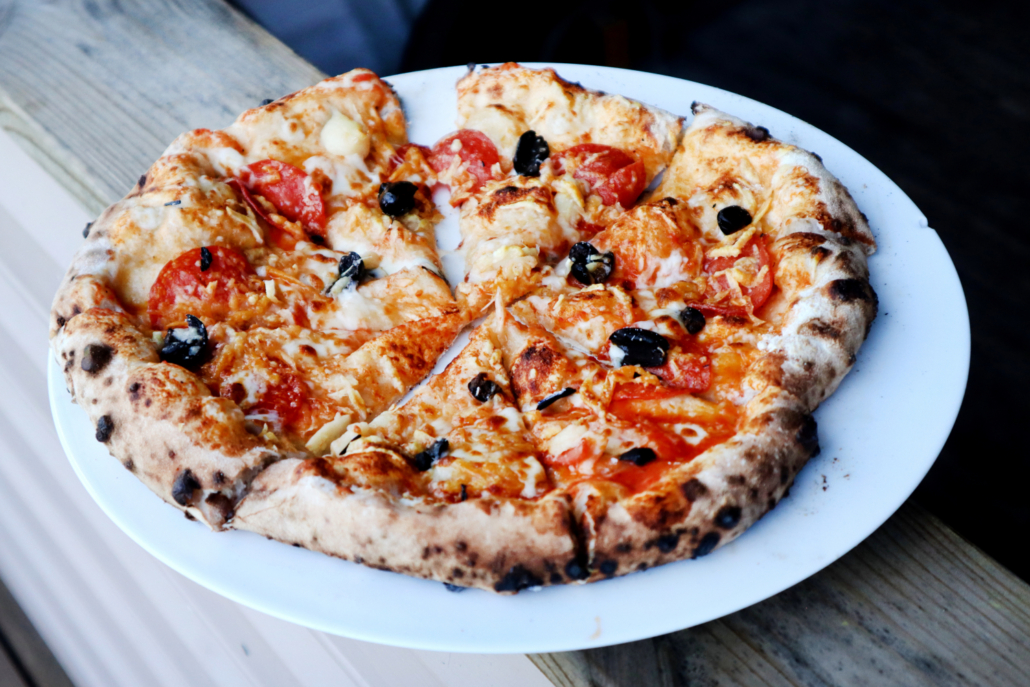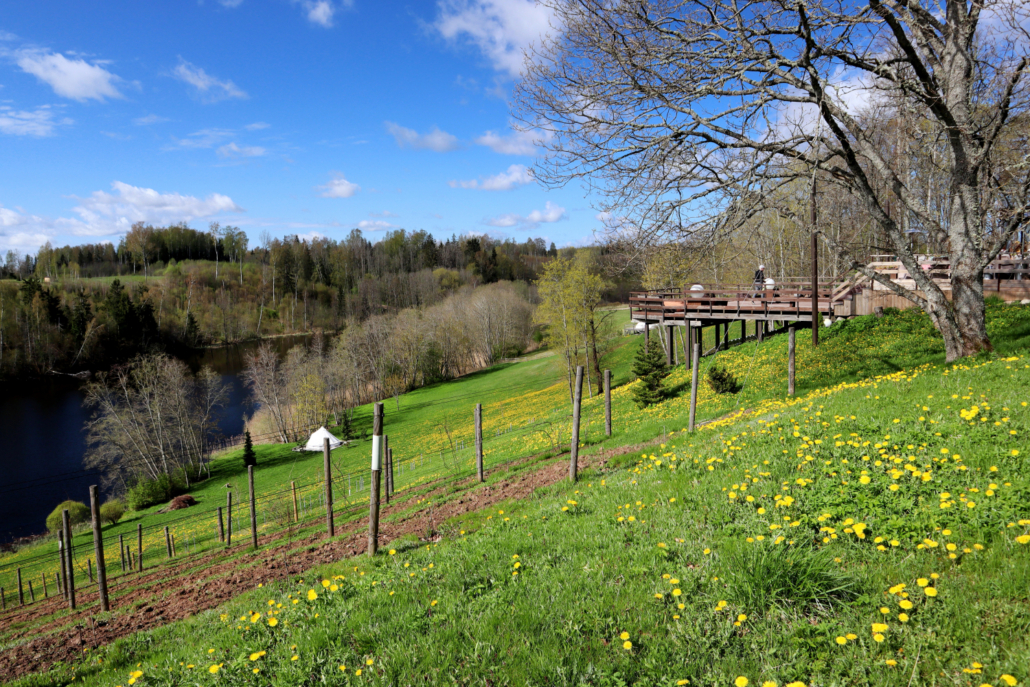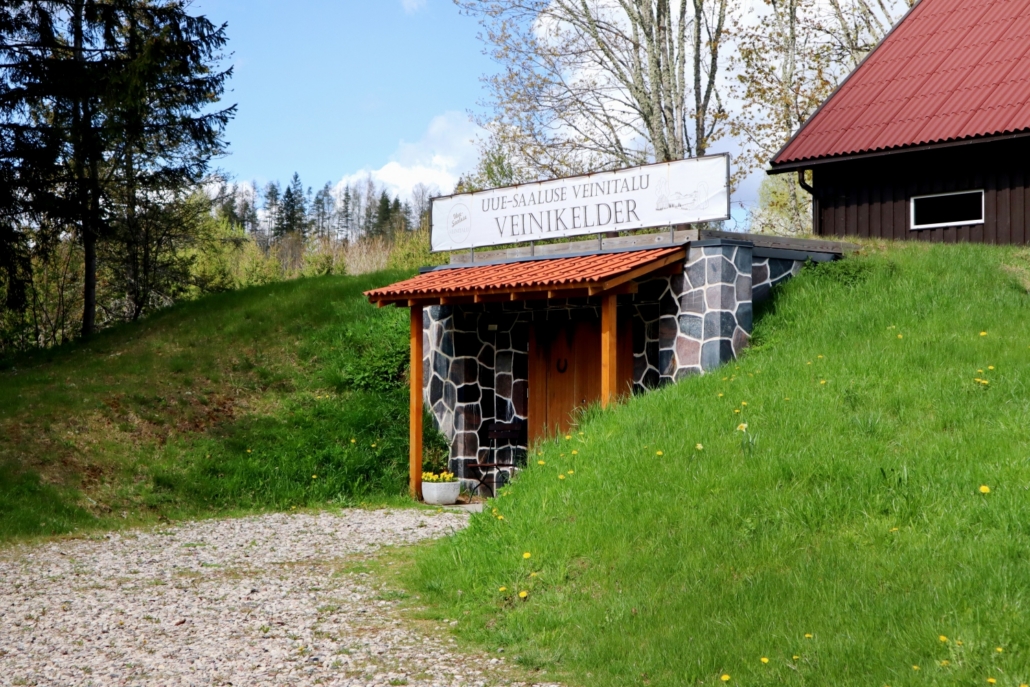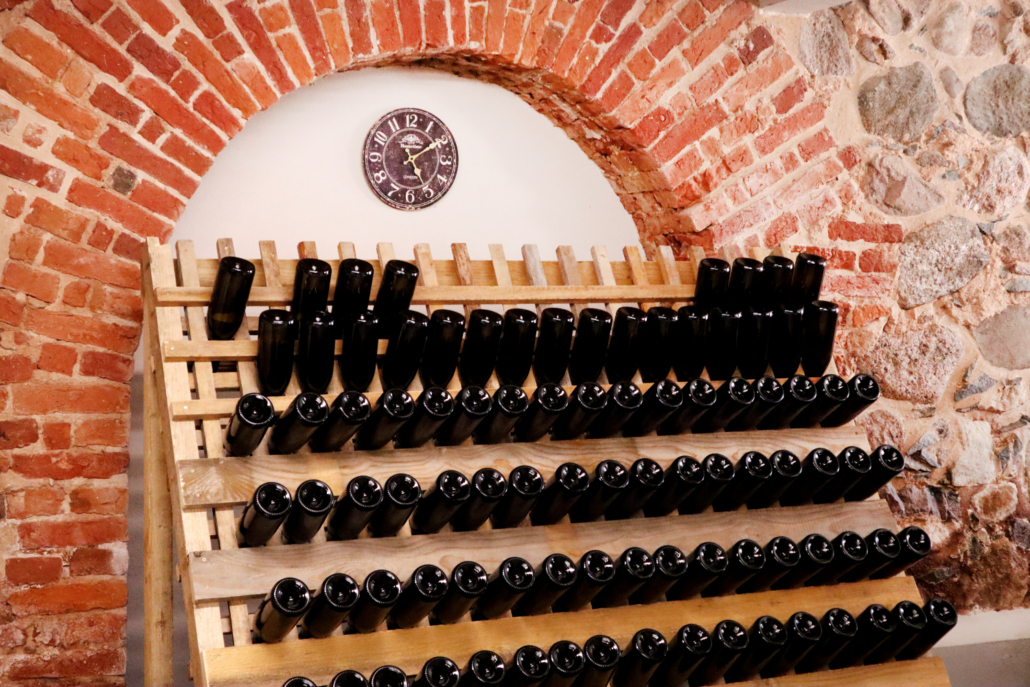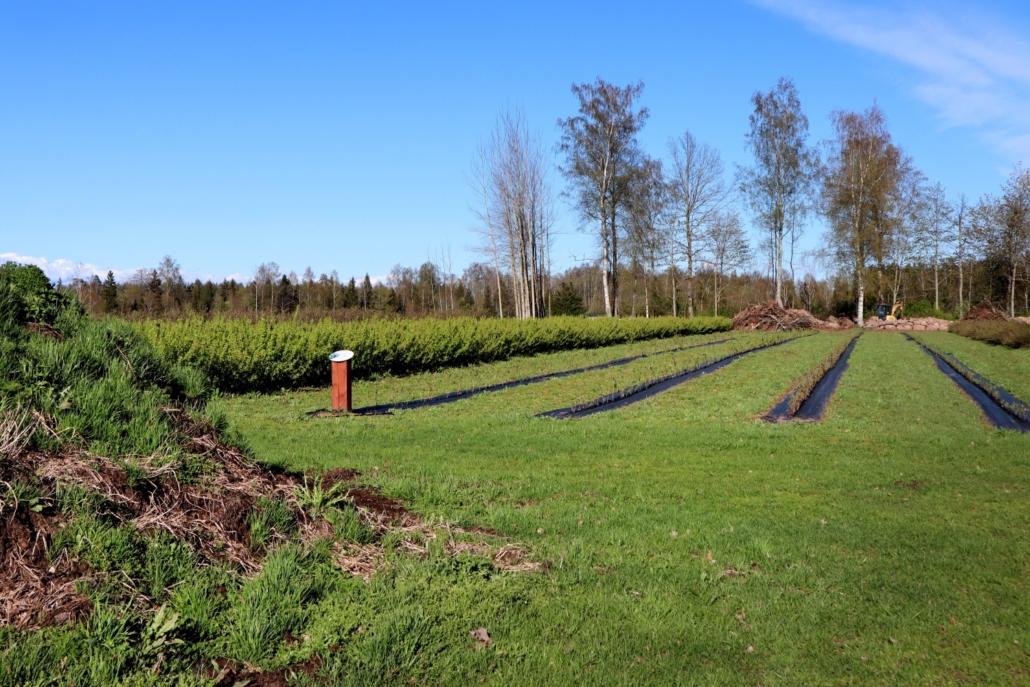Tuscan Vibes in Estonia
Latvian journalist and blogger Solveiga Kalva visited Southern Estonian wineries at the Season’s Opening event: “Picturesque hills draped with vineyards, winding country roads, wood-fired pizzas and sparkling drinks. Sounds like Tuscany? Possibly. But it turns out you can catch similar scenes—and an unmistakably Italian mood—in southern Estonia too. Each year an Estonian Wine Trail season-opening event is held, during which all the wineries on the route throw open their doors, courtyards and cellars, offering tastings, tours and other activities. As luck would have it, I ended up in the epicentre of this event and set off to chase Tuscan sunshine with our northern neighbours.”
Järiste Veinitalu – la dolce vita, italian style
Right by the roadside, travellers are cheerfully greeted by the historic tavern building of Luke Manor, which still partly serves its former function even today. The solid fieldstone house is home to the Järiste winery, inviting passers-by to explore Estonia’s slowly blossoming wine culture, stroll through gardens and greenhouses, unwind in the calm of the countryside, bite into a pizza worthy of an Italian chef and taste a local brew. In summer, luxuriant vines pleasantly shade the terrace overlooking the expanses of the garden, but for now that view has to be imagined—the vines are still waiting for warmer weather.
Järiste makes wine not only from berries and fruits familiar to our latitudes but also from its own grapes. Cold-hardy varieties grow outdoors, while the fussier ones live in greenhouses. Although winemaking began a few years ago as a hobby, the owner approaches the craft with such scientific rigour that winemakers from all over Estonia come to consult him. Medals earned at wine competitions also show that the Järiste team truly are masters of their trade. Together with the hostess Kristel we wander through the greenhouses, orchards and the winery itself. In one greenhouse, an apricot tree shyly hides among the vines. It doesn’t bear fruit yet, but one day it will surely bless them with sweet, juicy apricots.
In the garden, beneath a blossoming fruit tree, a small table set with Järiste wine and glasses sparkles in the spring sun. The tablecloth flaps madly in the wind; in the white cloud of flowers, bees buzz and hum so intensely the air around the tree practically vibrates. Rural idyll indeed. Kristel opens several bottles; the most unusual—and the most pleasing to my taste buds—is a strawberry–blackcurrant wine. Perhaps because I’d never tried that flavour pairing before, or perhaps because it was the first wine I tasted. The hostess explains that strawberry wine is a rarity in the berry-wine world, as it’s relatively tricky to make—the drink tends to develop an unattractive brownish tint over time. Järiste has solved the problem by adding blackcurrants, which keep the colour vividly luscious.
While I was exploring Järiste’s behind-the-scenes with Kristel, her husband was busy at the pizza oven—an Italian-made oven that travelled to Estonia from the very homeland of pizza. The aroma is irresistibly tempting; it’s hard to wait even a moment for it to cool. Puffy dough with the smoky note only a wood-fired oven can give, a little tomato sauce, a touch of salami, a few wisps of cheese, olives, and—unexpectedly, in a very Estonian twist—garlic. The pizza is superb: simple, austere and absolutely Italian. Well, apart from the Nordic garlic which, by the way, suits the flavour ensemble beautifully.
Here I truly feel like I’m in Italy. The calm courtyard and blossoming fruit trees simply invite you to relax, enjoy nature and pamper your palate.
A wineyard, inspired by a dog
Scenic roads continue to wind across South Estonia, taking us to a place so picturesque it’s hard to imagine anything more so. At the highest point of valleys carved by ancient glaciers stands the Murimäe winery and its terrace restaurant; vines bristle on the steep slope, while down in the hollow the waters of Lake Nahajärve gleam mysteriously. The lake stretches so long it looks like a river from afar—and I’m not far off: ten lakes lie side by side in the area, connected by a small stream, and Nahajärve is one of them. This pretty group of lakes is popular with paddlers who string them into an adventurous necklace like pearls.
No sooner do I step out of the car than a Labrador-like dog named Muri comes bounding over. The hostess Janika laughs: “I know, I know—Latvians think Muri is a cat’s name, but for us it’s a dog’s!” This is the second Muri in a row to greet Murimäe guests with a wagging tail. The first Muri now roams other hunting grounds, but the winery is named in his honour, and his snout adorns bottles, glasses, barrels—anything bearing the Murimäe logo. It turns out that first Muri actually inspired the owners to grow grapes. Initially they bought the scenic property as a summer retreat from city bustle. On a lark, Janika planted a single vine. Not an hour passed before Muri had thoroughly nibbled it and buried pieces of it elsewhere. Janika thought that was the end of the vine—but quite the opposite happened. The chewed plant grew vigorously, and new vines sprouted where Muri had tucked the cuttings into the soil. The owners decided that if even a dog could propagate vines so successfully, why couldn’t they? And so Estonia’s first terraced vineyard—and Murimäe winery—came to be. Looking at the vine-covered slope, I feel a bit like I’m in the Sabile Wine Garden in Latvia.
The enterprising Estonians grow not only grape varieties suited to the northern climate but also chokeberries (aronia), rhubarb, rowan, apples, cherries and gooseberries, while other fruits and berries are sourced from local suppliers. While the gardens are quiet today, the restaurant and terrace are buzzing—tempting cakes and pastries line up on the counter, a large pan sizzles with a main course, and the staff make ready for the tide of people set to flood Murimäe in the coming hours. They’re used to crowds, as they regularly host concerts, refined culinary events with top Estonian chefs and other delights for gourmands and life-enjoyers.
We sit down to a table laid with a generous platter of cheeses, nuts, fruit, freshly baked bread and homemade pesto. Our glasses fizz with both Murimäe’s quince lemonade—where a smiling Muri grins from the label—and sparkling wine. The sun is warm and a breeze gently ruffles hair. Guests can also try Estonia’s only wine-tasting machine: buy a voucher at the till, feed it into the machine, then choose both the drink and the amount—from a couple of sips to a full glass.
Uue-Saaluse: do it now!
By the time we drive into the courtyard of the Uue-Saaluse winery, the Wine Route season-opening event is in full swing. People are merrily tasting; a tour group has just finished their visit; the sun glints on yet another little lake—Lake Alajärv. Not far away you’ll also find Kavadi Lake, along which runs a slightly wild but well-maintained hiking trail—worth noting if, during your exploration of Estonia’s “Tuscany,” you get the urge to stretch your legs. South Estonia is lake after lake, so for a moment I feel as if I’ve arrived in Latgale, Latvia’s “land of blue lakes.”
When the next tour group sets off, we join them. The winery is housed in the former workers’ residence of the Uue-Saaluse manor. The ruins of the manor’s main house can be seen on a pretty hill by Kavadi Lake, but that calls for a hike; this time we make do with the workers’ building and the winery—there’s plenty of interest here too. The Uue-Saaluse owners bought the property in the 1990s and initially grew sea buckthorn, later turning to grape cultivation as well.
Grapevine growing and winemaking began as a hobby for their own pleasure and later became a full-time occupation. Though they draw inspiration from many places and events, it’s nice to hear that one motivator was Latvia’s Sabile Wine Festival. The hostess Marisa, a biologist by training, worked for years in a stable position in environmental education and only at fifty decided to radically change her life and devote herself to wine. She’s still delighted with that bold step and keeps learning—both the fine points of oenology and the digital skills needed to keep up with the times. After the tour she tells me, “If you want to do what you love in life, do it now—don’t wait!”
At one point Marisa brings out a month-old puppy and explains that the puppy’s mother, Guna, was named after a Latvian grape variety, ‘Guna’. Following tradition, the puppies will also be given grape-variety names. You can feel that the world of grapes truly is Marisa’s great passion.
As part of the event, a blind tasting is held. Three Uue-Saaluse bottles stand on the table, hidden in black sleeves. I pour a small sip of each and try to guess what they are. My guess: quince, rowan and aronia. Later it turns out I wasn’t far off—the first was quince-apple wine, the second rowan-apple, the third aronia-blackcurrant. Understandably, the strong flavours of quince, rowan and aronia overshadowed the apples and blackcurrants.
Although Uue-Saaluse’s main products are fruit, berry and grape wines—especially popular with buyers is a white made from Solaris grapes—their iced tea has also won many hearts. It’s made from fermented sea-buckthorn leaves with rhubarb and mint. The iced tea usually sells out fast and isn’t always available to taste. For example, today I don’t get to try it. A pity!
We sit on the outdoor terrace, enjoy the view of the lake and the little sauna—both of which appear on Uue-Saaluse’s labels—and treat ourselves to waffles baked by the neighbours and wild-garlic mayonnaise, sipping cowslip tea that suits spring so well. At one point the chef joins us and shares that in her free time she dances with the Veclaicene folk group and even took part with them in Latvia’s Song and Dance Festival. How about that!
Allikukivi – the first wine manor in Estonia
Festivities are in full swing at Allikukivi Manor, built of red brick. People sit happily on the terrace, sipping drinks, nibbling cakes and soaking up the evening sun. Erected in the mid-19th century, the manor stands proudly in the middle of a park and rejoices in the crowd of guests, lively conversations and a lovely evening. 19. The manor, built in the middle of the century, stands with dignity in the heart of the park and delights in the abundance of guests, lively conversations, and the pleasant evening.
The owners of Allikukivi call themselves Estonia’s first wine manor. In truly Italian fashion the whole family is involved: the wife is responsible for winemaking, the husband has trained as a pastry chef and bakes wonderfully delicious cakes, and their son Ott has qualified as a sommelier and is actively involved in the family business, doing whatever needs doing.
Though the manor looks grand from the outside, the interior was irreparably damaged in Soviet times. As in many manors in both Estonia and Latvia, a school operated here, with all the consequences that brings. Showing the ground-floor hall—where court-line markings are still visible on the floor, climbing bars stand against the wall and the lights are caged—Ott jokes, “You could ride a bike or rollerblade in here!” The owners began the interior work by restoring the wine cellars, and their future vision includes returning the entire manor to glory. Slow and steady wins the race. For now, visitors can see the cellars, the garden plantings and the park’s walking paths; in summer there are also glamping tents and open-air concerts.
Alongside the park stretch berry-bush plantations growing most of what’s needed for their wines. Ott proudly shows off green blackcurrants brought from Finland—recently a real fashion trend in Estonia. We take a short loop through the park. Pointing to a huge burl, Ott jokes, “That’s our local troll or gorilla—depends on what you see!” To my eye it looks like a gorilla hugging a tree.
Afterwards we reach the manor’s wine cellars, where the finished drink rests in wooden barrels, metal tanks and bottles. Much of the process here is done by hand. Ott quips that after several hours of corking sparkling wine bottles there’s no need to hit the gym—the manual device used for the job demands serious strength and energy. He boasts that their sparkling wines are made by the original Champagne method: juice and yeast go into the bottle, which is then placed neck-down in a special riddling rack. The bottles must be turned daily until all the yeast collects at the cork. Later, with a quick freeze, the deposit can be expelled and—voilà—the sparkling wine is ready.
When the tour ends, we of course don’t escape a tasting. I ask Ott what sets Allikukivi’s wines apart from others made in Estonia. He replies, “We don’t mix flavours. If it’s lingonberry wine, it’s lingonberry wine. If it’s rhubarb wine, it’s rhubarb wine.” In his experience, Estonians’ favourites are lingonberry, blackcurrant, aronia and rhubarb. On lingonberry I agree—it tastes like sunrise in a bog. But for me, the highlight of the tasting is the marzipan cake baked by Ott’s father. Exquisitely delicious!
Langemaa – following the President’s footsteps
Our final stop on today’s “Estonian Tuscany” route is the Langemaa winery. The sun is heading for the horizon; we’re a bit tired, and so are the hosts. This winery, too, began as a hobby. Look how Estonians know how to turn hobbies into full-time work! Since the wines the owner Priit made at home were a hit with friends, he decided to enter a competition. After receiving a high distinction and professional recognition, he began to think he should take winemaking more seriously. Said and done. An engineer by training, he blends a technological mindset with knowledge gathered in major wine countries and a creative approach.
On the Langemaa grounds, Priit’s ancestors’ apple orchards have stretched since long ago; when he turned to winemaking, he added thousands of blackcurrant, quince and aronia bushes. Honeysuckle has also been planted recently. Priit explains that honeysuckle berries make a wine with a very pleasant, gentle flavour. We stroll through the spacious grounds, where there are not only plantings but also educational panels—handy when a big tour bus arrives and stragglers who can’t hear the talk can learn on their own.
Although I don’t think I’d seen honeysuckle shrubs in real life before, I’m even more surprised by a bush with the Latin name Sorbaronia fallax—a hybrid of rowan and aronia. Up close you can see rowan has won the leaf-design contest. Later, when I taste the wine made from Sorbaronia fallax berries, rowan also dominates in flavour.
The owner is proud not only of the awards won in competitions but also of the fact that Estonia’s current president, Alar Karis, has visited his winery. That says “quality,” doesn’t it? To mark the honour properly, tourists can even take a special tour following in the president’s footsteps.
In closing, I want to add that I’m not urging anyone to go wine-tasting. Instead, I recommend heading to Estonia’s “Tuscany” to enjoy the enchanting landscapes and pleasant atmosphere, try pizzas, cakes and other delights—and pair them with lemonades, iced teas and other locally made non-alcoholic drinks. That Italian feeling is easy to catch even so.
Text and photos: Solveiga Kalva

